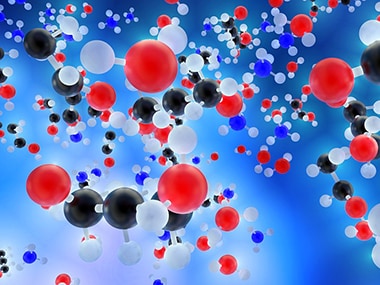Researchers from the
University of Michigan
have combined two existing techniques to remotely and rapidly identify explosives and dangerous gases. The multi-dimensional coherent spectroscopy (MCDS) technique allows researchers to identify gases from a distance by looking at the portions of the spectrum absorbed by the gases, which acts like a signature for the gases. However, the process is slow and can take hours. There is also a requirement for high-performance computers. The second technique is known as frequency combs, which can be used to measure the spectral features of atoms and molecules with high precision. [caption id=“attachment_4105101” align=“alignleft” width=“380”]
 Image: Pixabay[/caption] Study author
Steven Cundiff says
, “If you have light going through the gas, and, for example, you use a prism to separate white light into colored light, in the rainbow spectrum you’d see there’d be black stripes. Where the black stripes almost give you a barcode that tells you what kind of molecule is in the sample.” The findings of the study have been published in Science. Combining the two techniques allows for the identification of dangerous chemicals in under fifteen minutes, as against a few hours required when using the MCDS technique. The researchers used two frequency combs to tell the difference between two rubidium isotopes, a difference that could not be measured using the conventional MCDS technique. Future plans for the project include adding a third frequency comb, as well as use laser-based fibre optics that would allow the identifications of more chemicals by looking at them further into infrared light. A final product based on the system can be used at airports, toll booths, environmental monitoring of pollutants, and in the battlefield.
Image: Pixabay[/caption] Study author
Steven Cundiff says
, “If you have light going through the gas, and, for example, you use a prism to separate white light into colored light, in the rainbow spectrum you’d see there’d be black stripes. Where the black stripes almost give you a barcode that tells you what kind of molecule is in the sample.” The findings of the study have been published in Science. Combining the two techniques allows for the identification of dangerous chemicals in under fifteen minutes, as against a few hours required when using the MCDS technique. The researchers used two frequency combs to tell the difference between two rubidium isotopes, a difference that could not be measured using the conventional MCDS technique. Future plans for the project include adding a third frequency comb, as well as use laser-based fibre optics that would allow the identifications of more chemicals by looking at them further into infrared light. A final product based on the system can be used at airports, toll booths, environmental monitoring of pollutants, and in the battlefield.
Scientists develop technique to identify explosives and dangerous gases by remotely using lasers
tech2 News Staff
• October 3, 2017, 12:58:16 IST
A product based on the system can be used at airports, toll booths, environmental monitoring of pollutants, and in the battlefield.
Advertisement
)
End of Article